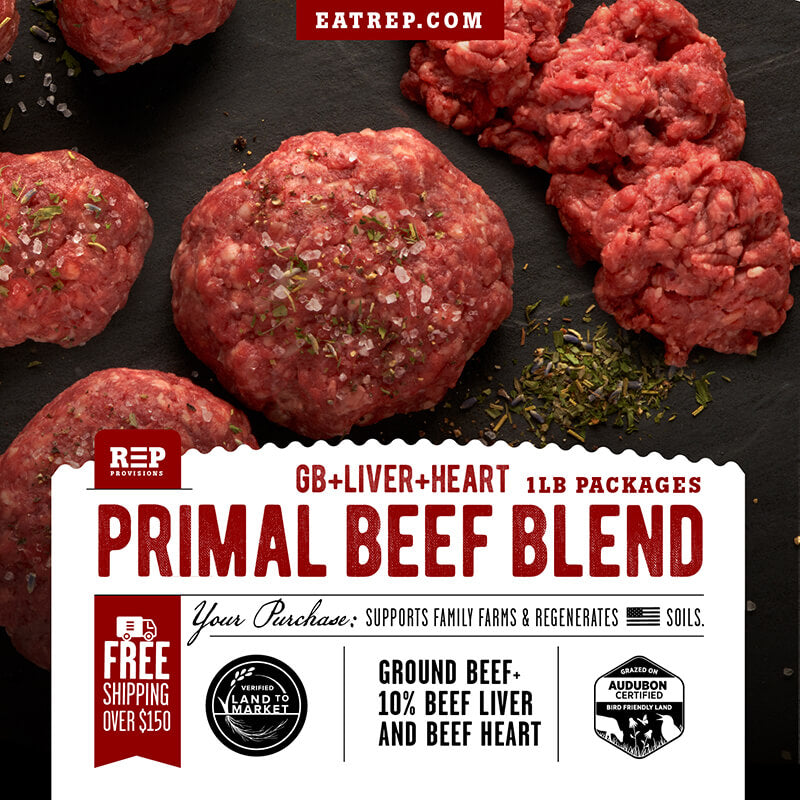
Overview
• Chronic pain is becoming increasingly common, with more than 25% of Americans experiencing pain that persists for over three months.
• Omega-6 fats, often overlooked, play a significant role in inflammation, pain signaling, and sensitivity to pain.
• Today, people consume 10-20 times more omega-6 fats than in the past, which may be linked to the rising rates of chronic pain, obesity, inflammation, heart disease, and cancer.
• Cutting back on omega-6 fats by avoiding seed oils might be a promising way to reduce the risk of chronic pain.
Introduction
Chronic pain—defined as pain that persists for more than three months—is a challenging and costl issue, impacting physical, emotional, and financial well-being. It's also on the rise.
More than a quarter of the U.S. population suffers from chronic pain, which is notoriously difficult to manage. Over-the-counter treatments are often inadequate, and prescription opioids, while effective, carry a high risk of addiction and can even exacerbate pain over time.
A contributing factor that is often overlooked in the discussion of chronic pain is the high intake of omega-6 fats in modern diets. Excessive consumption of omega-6 fats, particularly linoleic acid, can amplify pain signaling and sensitivity. Remarkably, the average person today consumes 10-20 times more linoleic acid than people did in the past.
In this article, we'll explore the factors contributing to chronic pain, how inflammation can exacerbate it, the connection between inflammation and seed oils, and the potential benefits of reducing seed oil intake to prevent chronic pain.
Understanding Chronic Pain and Its Causes
Chronic pain is defined as pain that lasts longer than three months. It's notoriously difficult to treat with safe medications, leading some patients to become dependent on addictive opioids. There are numerous causes of chronic pain, and many patients experience more than one type of pain simultaneously.
Common types of chronic pain include:
- Musculoskeletal pain: Such as back pain or myofascial pain.
- Inflammatory pain: Stemming from conditions like autoimmune disorders or infections.
- Nociceptive pain: Caused by tissue damage, such as burns or sprains.
- Neuropathic pain: Resulting from nerve damage or dysfunction.
- Psychogenic pain: Originating from psychological factors like stress.
- Idiopathic pain: Chronic pain with no known cause.
Chronic pain significantly diminishes the quality of life, affecting nearly every aspect of a person's existence. Over two-thirds of those with chronic pain also struggle with depression or anxiety, and there's an increased risk of suicide among these patients.
Despite advancements in understanding pain mechanisms, effective treatments for chronic pain remain elusive. Non-addictive medications like acetaminophen and NSAIDs often have limited effectiveness and can cause serious side effects. Meanwhile, opioids, though potent, are expensive, highly addictive, and can worsen pain over time.
Given the scarcity of effective treatment options, researchers are exploring alternative approaches, including off-label uses of anti-epileptic drugs, antidepressants, and combinations of pain medications with muscle relaxants or experimental drugs. However, these options are often habit-forming and come with significant adverse effects.
For those not yet affected by chronic pain, it's essential to be aware of the risk factors. A study on chronic lower back pain—a prevalent form of chronic pain—identified several key risk factors:
- Obesity: Increased the risk by 52%.
- Smoking: Raised the risk by 56%.
- Depression or anxiety: Elevated the risk by 66%.
- Improper care within the first three weeks of back pain onset: Increased the risk by 39-116%.
Researchers have also identified biomarkers that are altered in individuals with chronic pain compared to those without. Findings suggest that a higher omega-6 to omega-3 ratio is linked to a 75% higher risk of temporomandibular disorder and a 63% higher risk of lower back pain.
Adults with chronic pain tend to have a higher omega-6 to omega-3 ratio and elevated levels of C-reactive protein (CRP), a marker of systemic inflammation. This inflammation may contribute to the persistence and severity of chronic pain.
In the following sections, we'll delve into the connection between seed oils, inflammation, and chronic pain, and discuss what steps can be taken to reduce chronic pain through dietary changes.
Seed Oils, Inflammation, and Chronic Pain: The Connection
Seed oils, such as soybean, sunflower, and canola oil, are rich in linoleic acid, an omega-6 fatty acid that promotes inflammation. By driving inflammation, seed oil intake may contribute to chronic pain.
Historically, people consumed a balanced ratio of omega-6 to omega-3 fats, but modern diets have shifted drastically. Researchers estimate that the "evolutionary ratio" was around 1:1, but today, the average intake is between 15:1 and 17:1, reflecting an excessive intake of omega-6 fats.
As industrial seed oil production surged in the 20th century, these inexpensive oils became ubiquitous in cooking and processed foods. Today, most people derive 10-20% of their daily calories from seed oils, leading to a diet that is disproportionately high in omega-6 fats.
Our bodies are designed to maintain a balance between pro-inflammatory and anti-inflammatory signals. Consuming too many omega-6 fats disrupts this balance, increasing inflammation, damaging cells, and diminishing the effectiveness of anti-inflammatory processes. Excessive intake of seed oils can even deplete tissues of essential omega-3 fats.
As discussed earlier, individuals with chronic pain tend to have a higher omega-6 to omega-3 ratio and elevated levels of inflammatory markers like CRP. Chronic inflammation not only amplifies pain signaling but also heightens the brain and nervous system's sensitivity to pain.
While this area of research is still developing, there's a growing body of evidence suggesting that reducing omega-6 linoleic acid intake by avoiding seed oils could help prevent or alleviate chronic pain.
How Seed Oils Contribute to Chronic Pain
Chronic pain often results from a combination of factors, but seed oils may play a significant role in exacerbating pain symptoms. Seed oils like soybean and sunflower oil are high in omega-6 linoleic acid, an inflammatory fat that appears to increase pain signaling and sensitivity.
A 2022 study examined 605 adults to explore the relationship between omega-6 intake and chronic pain. The findings revealed a strong correlation between the omega-6 to omega-3 ratio and pain levels. For each one-point increase in the ratio, there was a 5-8 point increase in pain scores, depending on the type of pain.
In a separate 2016 study on rats, researchers observed that a high-omega-6 diet led to increased levels of linoleic acid and pain-related chemicals in tissues. The high-omega-6 diet also reduced omega-3 levels, which have pain-reducing properties. These findings suggest that modern diets rich in linoleic acid may increase the risk of chronic pain.
Additionally, a 2012 study on chronic headaches found that reducing linoleic acid intake significantly decreased pain levels and improved quality of life. The study also noted that byproducts of linoleic acid, like 9-HODE and 13-HODE, are linked to chronic pain and are produced during deep-frying with seed oils.
These studies underscore the potential benefits of reducing linoleic acid intake to lower inflammation and pain.
The takeaway: Can Seed Oils Cause Chronic Pain?
Chronic pain is a multifaceted problem with various contributing factors, including injury, illness, and psychological stress. However, the high consumption of seed oils rich in omega-6 linoleic acid is a plausible explanation for the rising prevalence of chronic pain.
Just a century ago, our ancestors consumed a balanced ratio of omega-6 to omega-3 fats. The introduction of seed oils like soybean, sunflower, corn, and canola oil has led to a significant increase in omega-6 intake, shifting our bodies into a state of chronic inflammation and increasing the risk of chronic pain.
Reducing linoleic acid intake by avoiding seed oils in cooking and processed foods may help restore balance and reduce the risk of chronic pain, as well as other conditions like obesity, heart disease, and cancer.
Unfortunately, it’s not feasible to consume enough omega-3-rich foods like wild-caught fish to counteract the high omega-6 intake from seed oils. Even a diet heavy in omega-3s wouldn’t be sufficient to offset the modern overconsumption of omega-6 fats.
The takeaway? Reducing your intake of seed oils could be a key step in preventing or managing chronic pain. We can help you do that by incorporating our Happy Prairie NO SEED OIL sauces into your dinner plans.




